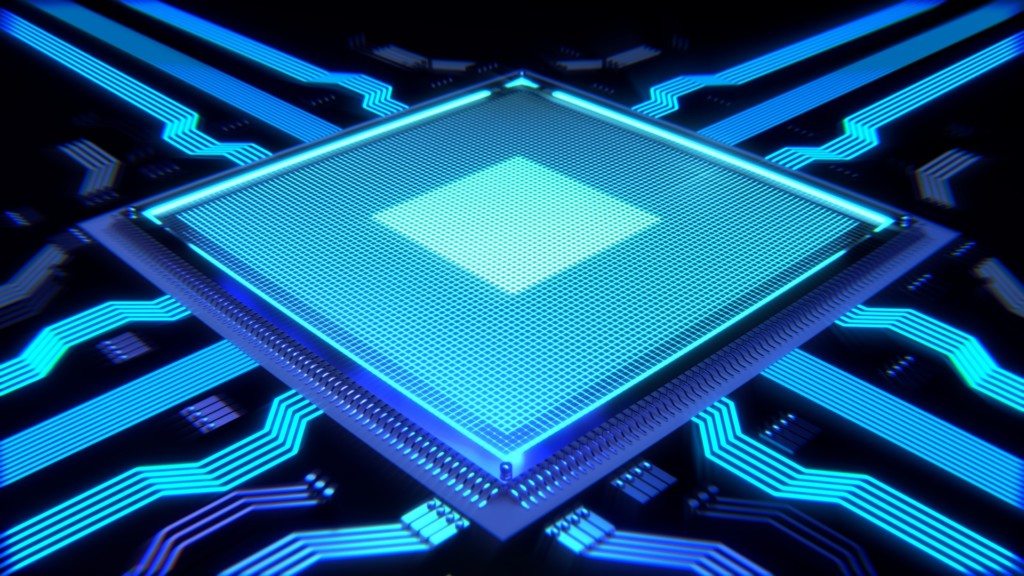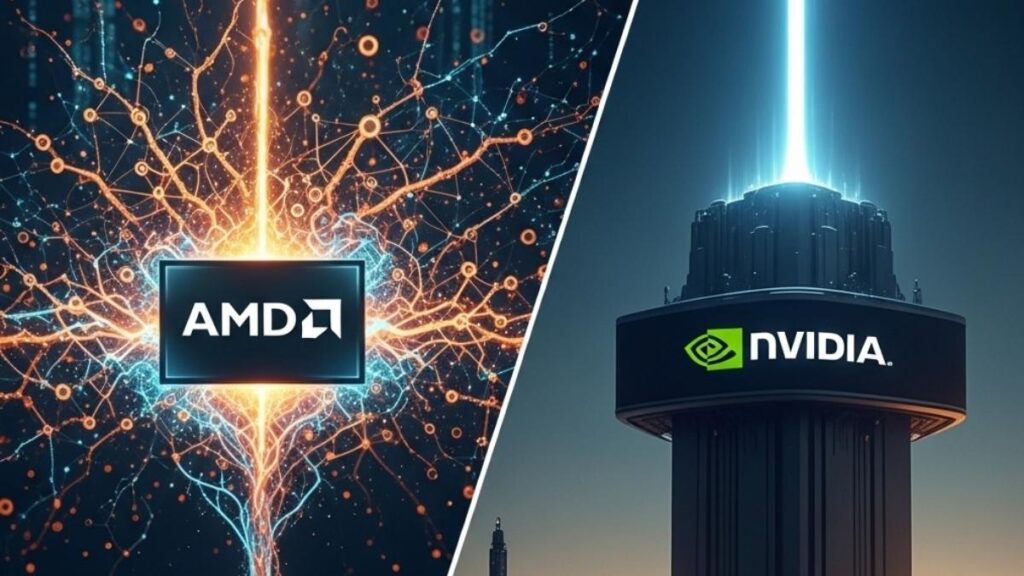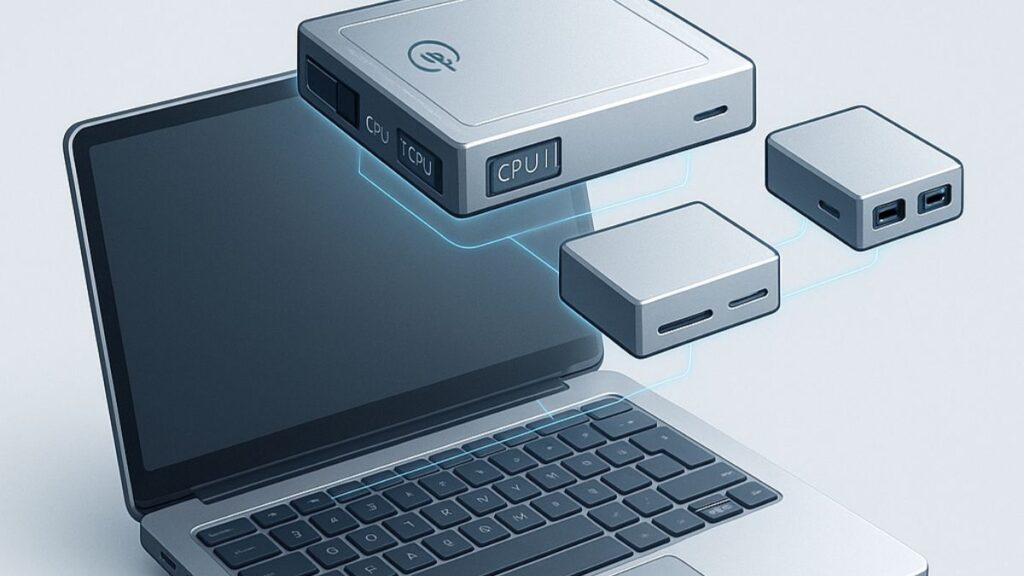AMD’s APU is really what separates the company from Intel and NVIDIA because AMD is the only firm in their class that can blend the GPU and the CPU into one product. Targeted at the entry-level market, this not only allows for impressively small form factors in terms of PCs but a more equal blending of CPU and GPU technology, while (depending on the power supply and case) also providing two upgrade paths: One where you replace the inexpensive CPU instead of the entire PC, or the other where you add a graphics card to boost the graphics. In the first case the upgrade is better than Intel’s because you update both the CPU and GPU (I know of no way to update the Intel integrated GPU without replacing the motherboard) and the second is at parity. As a result, Intel’s comparable solutions, are significantly inferior to AMD’s if being able to upgrade is important to you. And given an upgrade is a third to a quarter cheaper, it sure is important to me.
AMD’s latest parts are the AMD Ryzen 5 2400G and AMD Ryzen 3 2200G and I’ve been using the 5 for several days now. It has <href=”#7f36eb095f7a”>more than decent performance, generally outperforming Intel’s offering across a number of benchmarks for an entry-level offering and the graphics appear to be—as you would expect—far better than Intel’s alternative and in line with NVIDIA’s low end GPUs.
Intel’s Weakness
Intel currently is weaker now than they have ever been. They dedicated enormous resources to their failed attempts at competing with ARM on smartphones, chasing makers, doing failed TV shows, and reverse diversity that they appear to have pulled back from advancing their processor. In addition, the distractions from both the seeming insider trading activities from their CEO and their near unique memory architecture defect (that may eventually result in a government driven recall) have left them struggling. Finally, they have partnered with Apple in a war against Qualcomm for the modem market—a segment they really aren’t positioned to compete in broadly—and it remains that, should they prevail, Apple will replace Intel with Qualcomm’s then cheaper/better parts making that potentially a lose/lose.
This all focuses Intel on cost reductions and their current leadership has massively reduced Intel’s power and presence. This reduction has resulted in a far more balanced set of resources between the two firms and—particularly with regard outward bound messaging—a potential relative advantage for AMD now. Granted they’d still need to step up, but rather than an unachievable disparity which has existed since the beginning, Intel’s reductions have brought the firms nearer parity.
Due both to Intel’s new weakness and AMD’s improved execution we suddenly have a market nearly in balance except Intel continues to trend down and AMD up suggesting that balance is both short termed, and when it fails, may benefit AMD next time.
AMD’s Opportunity
As a result, AMD, who has become a Wall Street darling of late, has an unprecedented opportunity to not only take significant share—they could cripple Intel by doing so. This is because Intel is still tied to their very expensive FABs and, if those FABs drop into under utilization the related costs of running them could more than consume Intel’s profits if production drops low enough.
AMD is already making solid hits into Intel’s server market with impressive Dell Server wins and at the high end of the PC market with their even more impressive Threadripper part. Coupled with Vega graphics this part has been a surprise hit and showcases the benefits of powerful branding coupled with strong execution.
This latest APU could do severe damage to Intel’s market share at the low end of the market and this kind of a high volume hit, coupled with the other two events, could inflict an impressive amount of damage.
Wrapping Up
AMD’s impressive new APU parts coupled with Intel’s increasingly management-driven weaknesses provide AMD an almost unprecedented opportunity to steal massive share from their larger competitor. If AMD were to aggressively increase their demand generation efforts in the face of Intel’s inability to respond, there is an opportunity to make a huge one-time jump in market share. With Intel’s distractions continuing and AMD’s execution increasing, this opportunity will increase over time and, while currently remote, if both these trends continue we will see the end of Intel’s dominance in the segment. Intel may not go away, but at the rate they are weakening, the probability for AMD to pass them has never been so great. While it is doubtful that AMD will ever dominate this industry like Intel did, a greater parity between the firms would drive more choice, lower prices, and more interesting products. This last is true because Intel has been treating the segment as a cash cow of late which rarely bodes well when a segment is under attack.
The king (Intel) may not be dead yet, but the prognosis isn’t good. AMD, on the other hand is kicking butt. Given this, I’m thinking that is a good thing.
- The Human Element: HP’s Latest Security Report and My Near-Miss with a Digital Predator - July 11, 2025
- The Mighty Mini: Why HP’s Z2 Mini G1a Workstation Is the Unsung Hero of AI Development - July 7, 2025
- The HP OmniBook X Flip 2-in-1 16-Inch: Your New Digital Swiss Army Knife (Now in Glorious Atmospheric Blue) - June 25, 2025




I am a red guy, but I am also objective.
I have long thought intel is in more trouble than most think.
Kudos to you for being the first afaik, to declare the emperor scantily clad.
The killer, as you say is their model based on high margins on a whole range of volume sellers.
The few remaining competitive products have had their margins decimated, and as you also say, underutilised Fabs is a very bad place to be. It nearly destroyed Amd.
Income will reduce heaps, but outgoings will remain.
“AMD is the only firm in their class that can blend the GPU and the CPU into one product”
Uh… Clarkedale Core i5 had in-package IGP a whole 8 years ago.
…Even if you’re talking monolithic, Sandy Bridge was 7 years back.
Correct the article pls thx
As you point out, Clarkdale (correct spelling) was not monolithic and a very different part. Sandy Bridge and AMD’s APU both launched in 2011, AMD continued the offering as successful, Intel did not. AMD remains the only firm in their class that currently blends a GPU and CPU successfully into one product. Intel has historically been relatively weak on graphics and recently had to partner with AMD to close that competitive gap.
References: https://en.wikipedia.org/wiki/Sandy_Bridge
https://en.wikipedia.org/wiki/AMD_Accelerated_Processing_Unit
https://en.wikipedia.org/wiki/Clarkdale_%28microprocessor%29
https://www.hardocp.com/news/2018/03/08/intel_hades_canyon_nuc_benchmarks_leak/
1. “AMD remains the only firm in their class that currently blends a GPU and CPU successfully into one product” That’s still a different statement than “AMD is the only firm in their class that can blend the GPU and the CPU into one product.”
2. Clearly define “success”. You’re saying that #1 market share isn’t “success”? What about the term “good enough computing”? Do you agree that Intel SUCCESSFULLY addressed, and is continuing to successfully address, the mid to low-end laptop market?
I will have to insist that you correct the article.
1. AMD is currently the only firm selling a current generation APU at volume. 2. AMD has #1 market share in APUs.
Insist away…
1. Intel CPUs that have IGPs are selling at much greater volume than AMD’s processors. Do you even know what you’re talking about? 2. See #1.